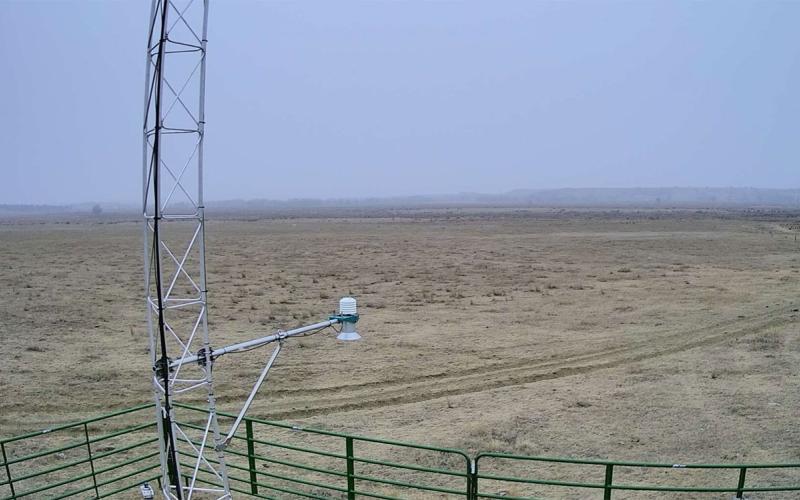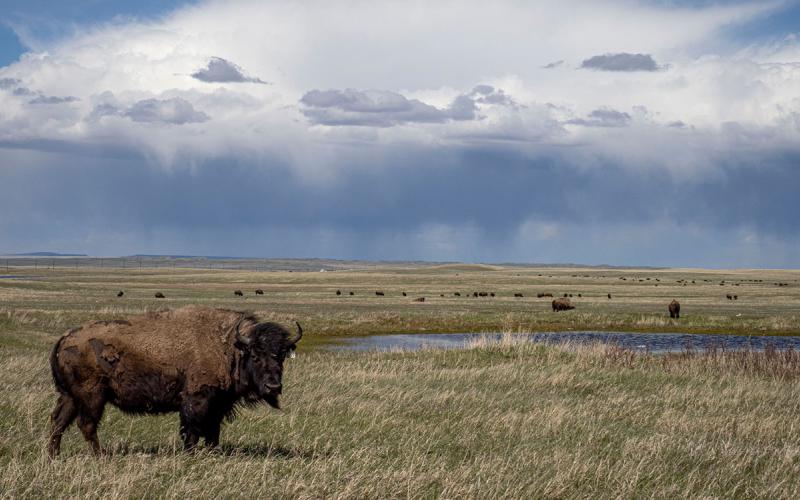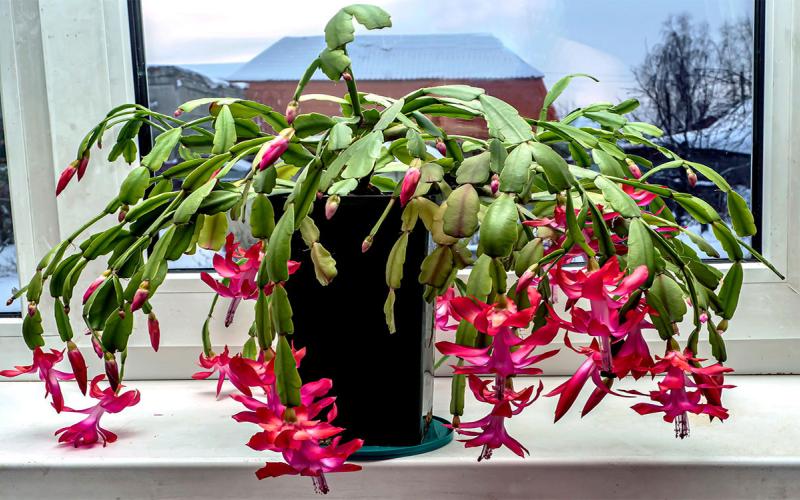Introduction
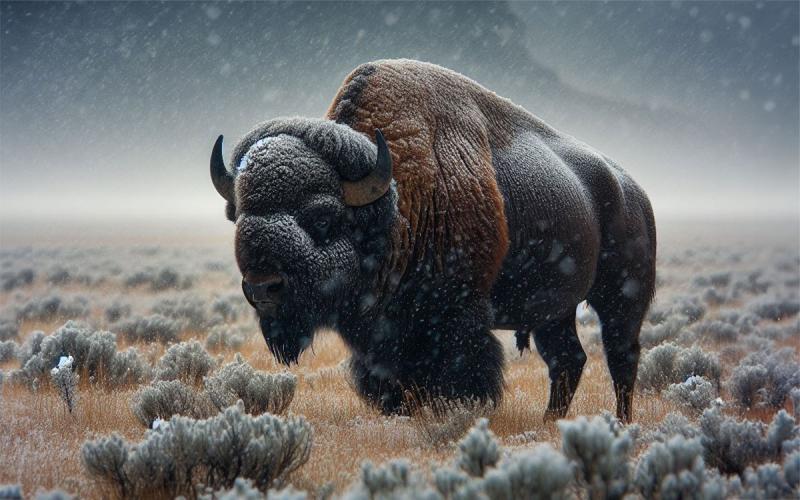
In bison ranching, climate change poses distinctive challenges for producers. Bison herds are highly reliant on ecosystem balance, and they are acutely sensitive to climate shifts. In preparation for climate change, adopting the "forewarned is forearmed" mantra is crucial to the success of bison operations.
This article explores practical insights and tools provided by the Climate Toolbox, such as the Future Climate Analogs and the Future Climate Dashboard, equipping ranchers to make informed decisions in ranch planning, grassland management, and parasite control.
Subsequent sections delve into navigating the Climate Toolbox and offer a case study analyzing climate implications for bison ranching in Rapid City, South Dakota.
Using the Climate Toolbox: A Step-by-Step Guide
Future Climate Dashboard
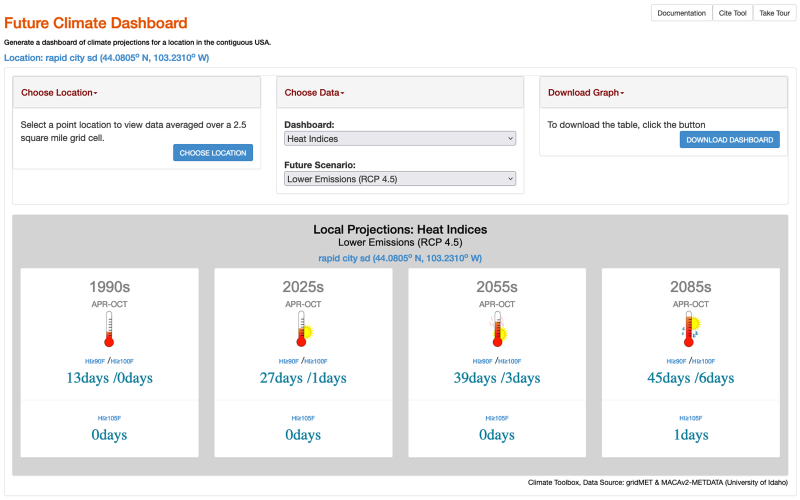
- Begin by accessing the Future Climate Dashboard.
- Navigate to the Future Climate Dashboard.
- Once there, you may “Take a Tour” or simply “Go to Tool.”
- Input analog locations.
- Select “Choose Location.”
- Input the analog locations identified for “Rapid City,” or use any of the other options. This tool provides a visual representation of climate projections for multiple variables simultaneously.
- Explore the climate projections.
- Under the “Choose Data” section, choose the dashboard theme of interest. Options include heat indices, summer temperatures, winter temperatures, growing degree days, growing season, and fire danger.
- For the “Future Scenario” selection, it is recommended to use both the lower and higher emissions to have a more comprehensive understanding of the likely scenarios.
Dashboard Estimates
The “Dashboard” provides estimates of your selected climate variables. Figures 1 through 3 below show examples of Summer Temperatures, Winter Temperatures, and Water outputs. These numbers are useful for contextualizing the likely future climate in your area.
Summer Temperatures
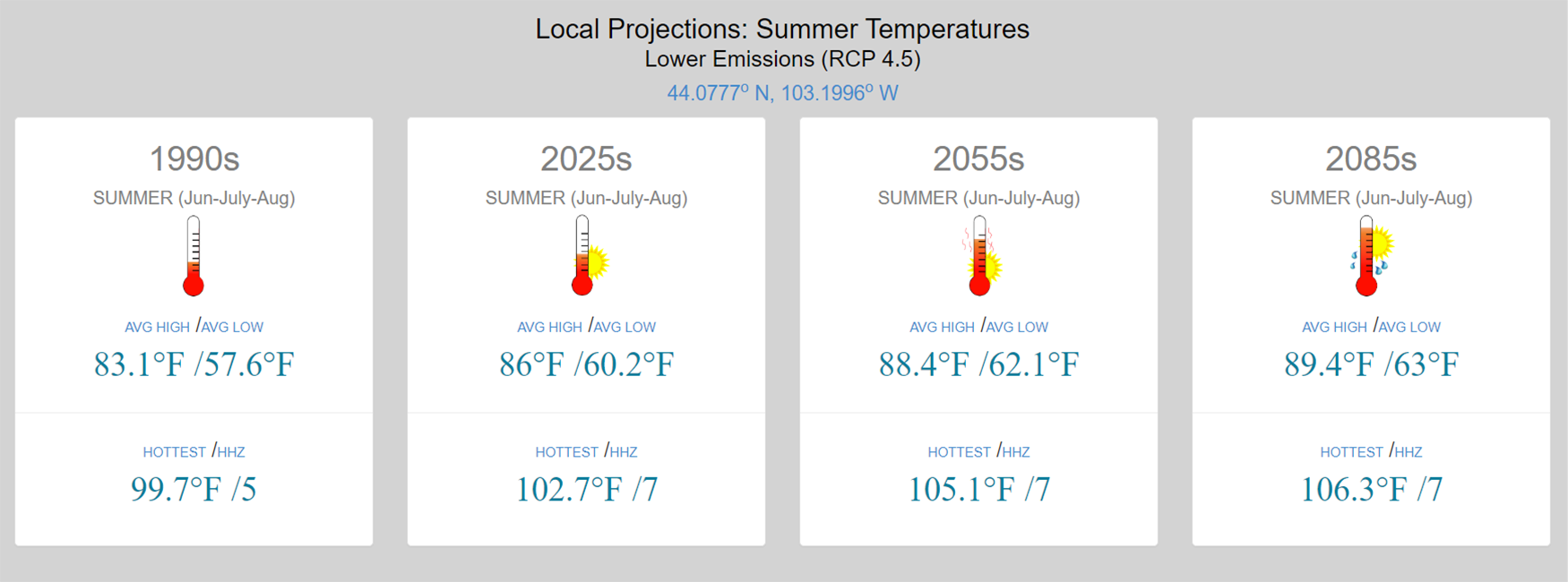
Winter Temperatures
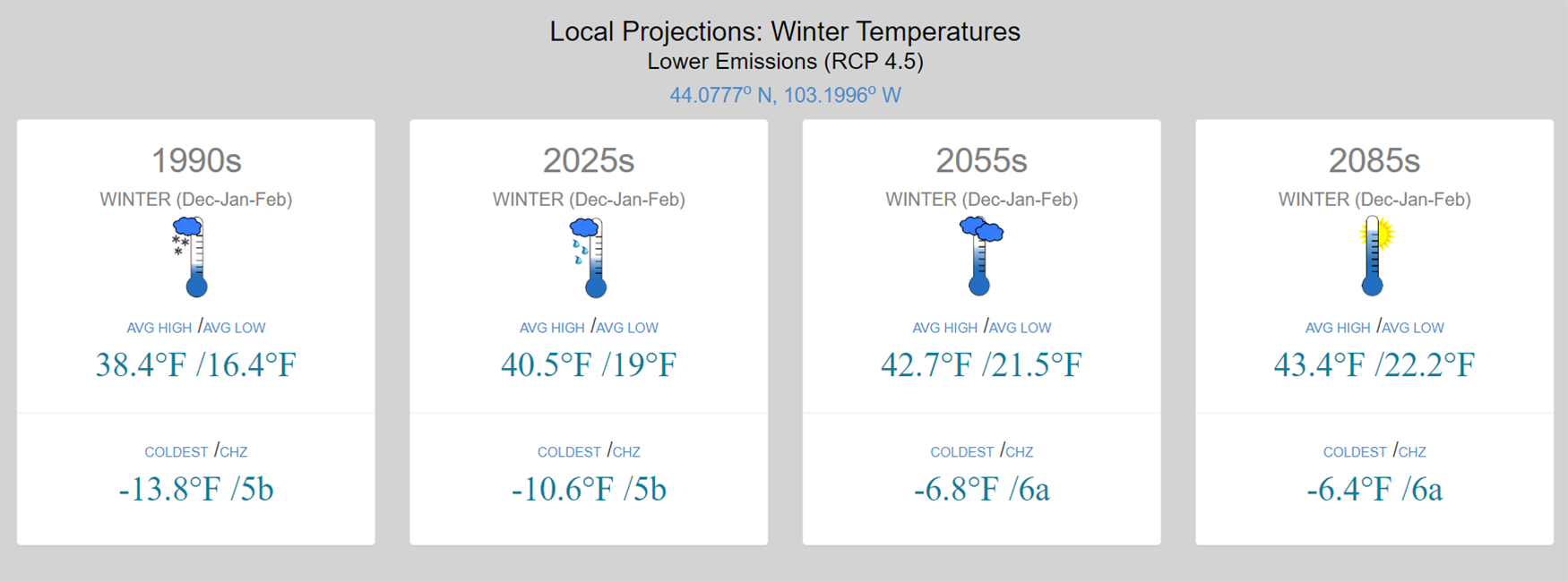
Water
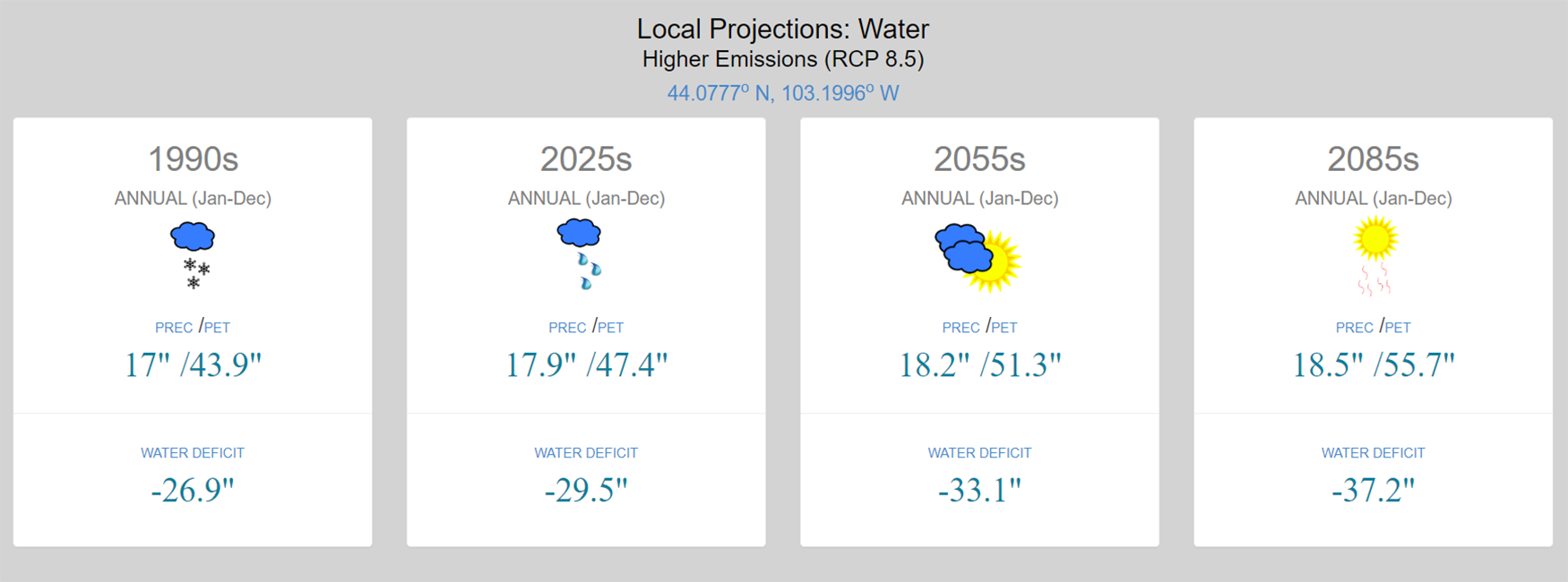
Future Climate Analogs
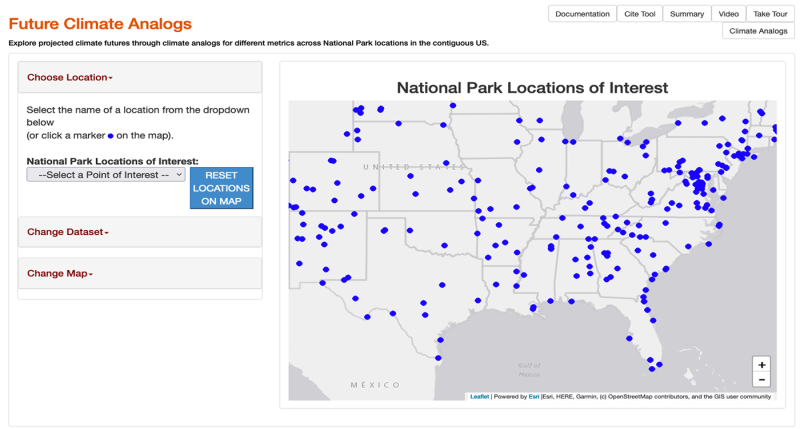
This feature provides a visual aid to enhance your understanding of the broader climate context.
- Access the Future Climate Analogs tool.
- Navigate to the Future Climate Analogs tool.
- You may “Take a Tour” or simply “Go to Tool.”
- Location Selection: One peculiarity with this tool, is that you must select a nearby National Park System location.
- Select Wind Cave National Park, as it is the closest to Rapid City, South Dakota.
- Change Dataset: Climate Definition.
- For our purposes, select “Four Variable Combination.” This selection provides the most-comprehensive analog for where to feel your future climate.
- Choose Future Climate Scenarios.
- Select future climate scenarios (2040-2069) and consider different emission scenarios for a comprehensive idea of your future climate possibilities.
- Model Results.
- Keep the “10-Model Mean” selected.
- View the output (Figure 4).
Comparing Locations
It is useful to do this using a couple of national park locations, because landscapes may vary near you. For example, the sample case scenario based on Wind Cave National Park in Figure 4 is a drastically different prediction from the Badlands National Park prediction in Figure 5.
Wind Cave National Park

Badlands National Park
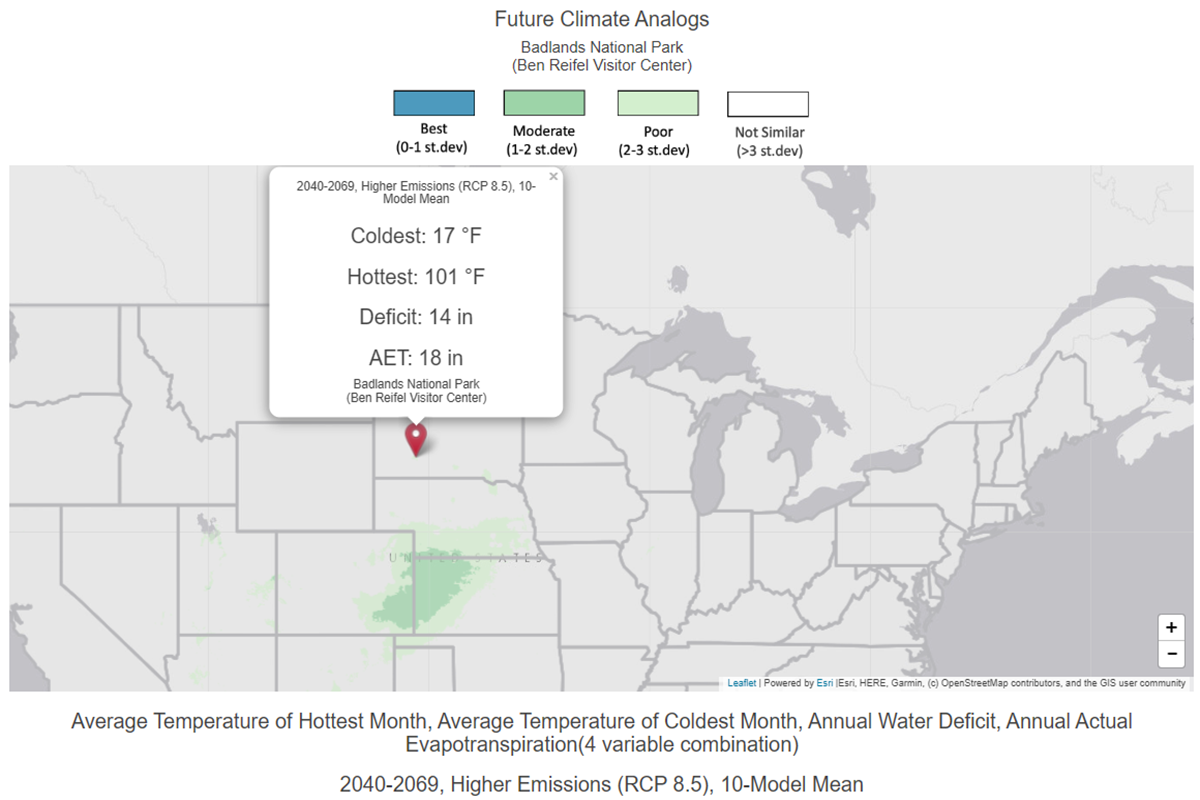
Combining Insights
By combining the insights from the Future Climate Analogs tool with the visualizations provided by the Future Climate Dashboard, you can gain a more comprehensive understanding of how the climate of Rapid City, South Dakota, may change in the future. This integrated approach allows you to explore specific climate variables of interest and make more-informed decisions related to various sectors, considering the potential impacts of climate change on your region.
Sustainability in Bison Ranching
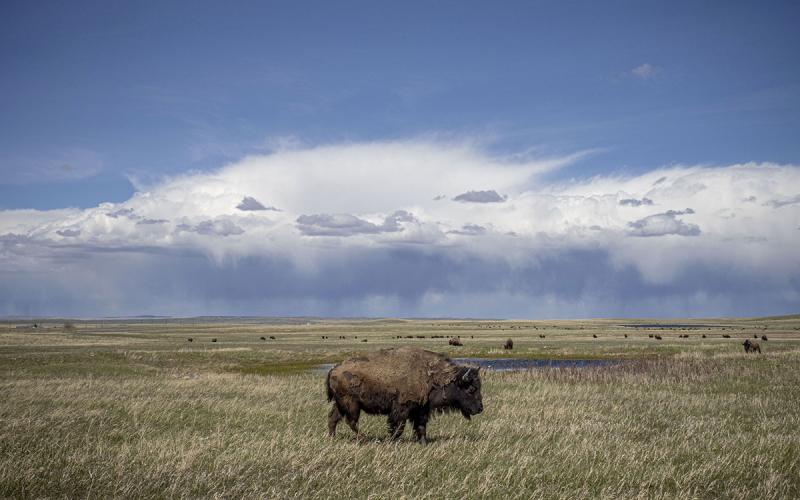
Bison ranching, with its reliance on natural ecosystems, is particularly sensitive to climate variations. The insights gained from the Climate Toolbox's Future Climate Dashboard and Future Climate Analogs can play a pivotal role in adaptive ranch planning, optimizing grassland productivity, managing parasite dynamics, and ensuring long-term sustainability. After you identify where your future climate is located, reach out to a fellow bison rancher in that region. You may request to visit their place to get a preview of how they deal with parasites or other weather-dependent chores. Perhaps the National Bison Association will be hosting a regional summer meeting in that location for you to visit.
Ranch Planning
Understanding the future climate analogs of your location provides you with a unique perspective on potential changes in temperature, precipitation patterns, and growing season conditions. This information is useful for adapting your ranch operations, including grazing strategies, water resource management, and infrastructure development. This data can be used to anticipate and adapt to shifts in the availability and quality of forage, ensuring the well-being of your bison herds.
Grassland Productivity and Quality
Climate variations directly impact grassland productivity and quality, influencing the availability of nutritious forage for bison. By examining climate variables related to temperature, precipitation, and growing season length, you can better anticipate changes in grassland ecosystems. Adjusting grazing patterns, considering alternative forage options, and implementing sustainable land management practices become essential strategies for maintaining optimal grassland productivity and quality in the face of changing climates.
Parasite Abundance and Variety
Climate influences the distribution and abundance of parasites, impacting bison health. Future Climate Analogs can provide insights into potential shifts in parasite dynamics, allowing ranchers to proactively implement parasite management strategies. This includes adjusting deworming schedules, monitoring for changes in parasite life cycles, and considering rotational grazing practices to break parasite cycles. Adapting parasite control measures based on anticipated climate changes is crucial for maintaining the health and resilience of bison herds.
Ensuring Sustainability
Sustainability in bison ranching involves a holistic approach that considers ecological, economic, and social factors. The integration of climate data into ranch planning helps ensure the long-term viability of the operation. By aligning grazing practices with anticipated climate conditions, addressing potential changes in forage availability, and managing parasite pressures effectively, ranchers can enhance the overall sustainability of their bison ranch. This approach promotes resilience in the face of climate challenges and contributes to the conservation of grassland ecosystems.
As with any planning, staying informed and collaborating with researchers and your veterinarian to refine management strategies based on emerging scientific knowledge and field observations is essential.
Additional Resources and Works Cited
- The Climate Toolbox, University of California Merced.
